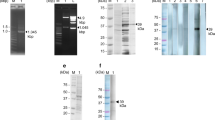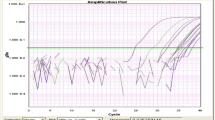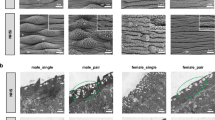Abstract
The polymerase chain reaction (PCR) assay has turned out to be one of the most potential tools for diagnosis of schistosomiasis. However, the source and metabolic dynamics of Schistosoma japonicum DNA in the blood of hosts is not clear. In this study, rabbit models with monosexual and mixed sexual cercariae infection were established to interpret the source of the parasite DNA in serum of the hosts. Following administration of praziquantel at 7 weeks postinfection, the metabolic mechanism of S. japonicum DNA in serum of the hosts was studied. The findings showed that, for the monosexual cercariae infection, the parasite DNA was detectable in serum of the host from day 3 to week 3 postinfection, while for the mixed sexual cercariae infection, the detection results were continually positive during the 7 weeks after infection. After treatment with praziquantel, detection of S. japonicum DNA in rabbit sera became positive at the second day posttreatment, and the positive period lasted 3 weeks in the monosexual cercariae infection group. However, with the mixed sexual cercariae infection group, the PCR results remained positive for 16 weeks after treatment. We conclude that the S. japonicum DNA in host serum primarily comes from the residual body of dead schistosomula and/or tegument shedding of worm growing in the first 4 weeks postinfection, while during the spawning stage of the female schistosome, the parasite DNA mainly comes from the disintegration of inactive eggs. The duration from treatment to total elimination of worm origin DNA in serum is not exceeding 3 weeks. However, the DNA release from inactive eggs can last for more than 16 weeks. Further studies are needed to address the sources and metabolic dynamics of S. japonicum DNA in human serum.


Similar content being viewed by others

References
Berriman M, Haas BJ, LoVerde PT, Wilson RA, Dillon GP, Cerqueira GC, Mashiyama ST, Al-Lazikani B, Andrade LF, Ashton PD, Aslett MA, Bartholomeu DC, Blandin G, Caffrey CR, Coghlan A, Coulson R, Day TA, Delcher A, DeMarco R, Djikeng A, Eyre T, Gamble JA, Ghedin E, Gu Y, Hertz-Fowler C, Hirai H, Hirai Y, Houston R, Ivens A, Johnston DA, Lacerda D, Macedo CD, McVeigh P, Ning Z, Oliveira G, Overington JP, Parkhill J, Pertea M, Pierce RJ, Protasio AV, Quail MA, Rajandream MA, Rogers J, Sajid M, Salzberg SL, Stanke M, Tivey AR, White O, Williams DL, Wortman J, Wu W, Zamanian M, Zerlotini A, Fraser-Liggett CM, Barrell BG, El-Sayed NM (2009) The genome of the blood fluke Schistosoma mansoni. Nature 460:352–358
Gobert GN, Chai M, Duke M, Mcmanus DP (2005) Copro-PCR based detection of Schistosoma eggs using mitochondrial DNA markers. Mol cell probes 19:250–254
Hung YW, Remais J (2008) Quantitative detection of Schistosoma japonicum cercariae in water by real-time PCR. PLoS Negl Trop Dis 2:e337. doi:10.1371/journal.pntd.0000337
Laha T, Brindley PJ, Smout MJ, Verity CK, McManus DP, Loukas A (2002) Reverse transcriptase activity and untranslated region sharing of a new RTE-like, non-long terminal repeat retrotransposon from the human blood fluke, Schistosoma japonicum. Int J Parasitol 32:1163–1174
Lier T, Johansen MV, Hjelmevoll SO, Vennervald BJ, Simonsen GS (2008) Real-time PCR for detection of low intensity Schistosoma japonicum infections in a pig model. Acta Trop 105:74–80
Lier T, Simonsen GS, Wang T, Lu D, Haukland HH, Vennervald BJ, Hegstad J, Johansen MV (2009) Real-time polymerase chain reaction for detection of low-intensity Schistosoma japonicum infection in China. Am J Trop Med Hyg 81:428–432
Moore DV, Sandground JH (1956) The relative egg producing capacity of Schistosoma mansoni and Schistosoma japonicum. Am J Trop Med Hyg 5:831–840
Mulvenna J, Moertel L, Jones MK, Nawaratna S, Lovas EM, Gobert GN, Colgrave M, Jones A, Loukas A, McManus DP (2010) Exposed proteins of the Schistosoma japonicum tegument. Int J Parasitol 40:543–554
Peeling RW, Smith PG, Bossuyt PM (2006) A guide for diagnostic evaluations. Nat Rev Microbiol 4(9 Suppl):S2–S6
Pontes LA, Dias-Neto E, Rabello A (2002) Detection by polymerase chain reaction of Schistosoma mansoni DNA in human serum and feces. Am J Trop Med Hyg 66:157–162
Rabello A, Pontes LA, Dias-Neto E (2002) Recent advances in the diagnosis of Schistosoma infection: the detection of parasite DNA. Mem Inst Oswaldo Cruz 97(Suppl 1):171–172
Sandoval N, Siles-Lucas M, Lopez AJ, Perez-Arellano JL, Garate T, Muro A (2006) Schistosoma mansoni: a diagnostic approach to detect acute schistosomiasis infection in a murine model by PCR. Exp Parasitol 114:84–88
Steinmann P, Keiser J, Bos R, Tanner M, Utzinger J (2006) Schistosomiasis and water resources development: systematic review, meta-analysis, and estimates of people at risk. Lancet Infect Dis 6:411–425
Suzuki T, Osada Y, Kumagai T, Hamada A, Okuzawa E, Kanazawa T (2006) Early detection of Schistosoma mansoni infection by touchdown PCR in a mouse model. Parasitol Int 55:213–218
Taylor M (2008) Global trends in schistosomiasis control. Bull World Health Organ 86:738
Wichmann D, Panning M, Quack T, Kramme S, Burchard GD, Grevelding C, Drosten C (2009) Diagnosing schistosomiasis by detection of cell-free parasite DNA in human plasma. PLoS Negl Trop Dis 3:e422. doi:10.1371/journal.pntd.0000422
Xia CM, Rong R, Lu ZX, Shi CJ, Xu J, Zhang HQ, Gong W, Luo W (2009) Schistosoma japonicum: A PCR assay for the early detection and evaluation of treatment in a rabbit model. Exp Parasitol 121:175–179
Xu J, Rong R, Zhang HQ, Shi CJ, Zhu XQ, Xia CM (2010) Sensitive and rapid detection of Schistosoma japonicum DNA by loop-mediated isothermal amplification (LAMP). Int J Parasitol 40:327–331
Zhou Y, Zheng H, Chen Y, Zhang L, Wang K, Guo J, Huang Z, Zhang B, Huang W, Jin K, Dou T, Hasegawa M, Zhang Y, Zhou J, Tao L, Cao Z, Li Y, Vinar T, Brejova B, Brown D, Li M, Miller DJ, Blair D, Zhong Y, Liu F, Hu W, Wang ZQ, Zhang QH, Song HD, Chen S, Xu X, Xu B, Ju C, Huang Y, Brindley PJ, McManus DP, Feng Z, Lu G, Ren S, Wang Y, Gu W, Kang H, Chen J, Chen X, Wang L, Yan J, Lv X, Jin L, Wang B, Pu S, Zhang X, Zhang W, Hu Q, Zhu G, Yu J, Wang J, Yang H, Ning Z, Beriman M, Wei CL, Ruan Y, Zhao G, Wang S, Zheng H, Brindley PJ, Blair D, Han ZG, Chen Z (2009) The Schistosoma japonicum genome reveals features of host–parasite interplay. Nature 460:345–351
Acknowledgments
We are grateful to Dr. Donato Cioli, Institute of Cell Biology, Monterotondo, Italy for the supply of S. mansoni adult worms. This study was supported by the “National Basic Research Program of China” (973 Program, grant no. 2007CB513102 to C.M.X and grant no. 2007CB513104 to X.Q.Z), the program of “Development of Science and Technology in Suzhou” (grant no. SYS20107 to C.M.X), and the program of “Key Laboratory of Prevention and Control of Parasitic Diseases of Healthy Ministry” (grant no.WK09-004 to C.M.X). The funding bodies had no role in study design, data collection and analysis, decision to publish, or preparation of the manuscript.
Author information
Authors and Affiliations
Corresponding authors
Additional information
Jing Xu and Ai-Ping Liu contributed equally to this work.
Rights and permissions
About this article
Cite this article
Xu, J., Liu, AP., Guo, JJ. et al. The sources and metabolic dynamics of Schistosoma japonicum DNA in serum of the host. Parasitol Res 112, 129–133 (2013). https://doi.org/10.1007/s00436-012-3115-3
Received:
Accepted:
Published:
Issue Date:
DOI: https://doi.org/10.1007/s00436-012-3115-3



